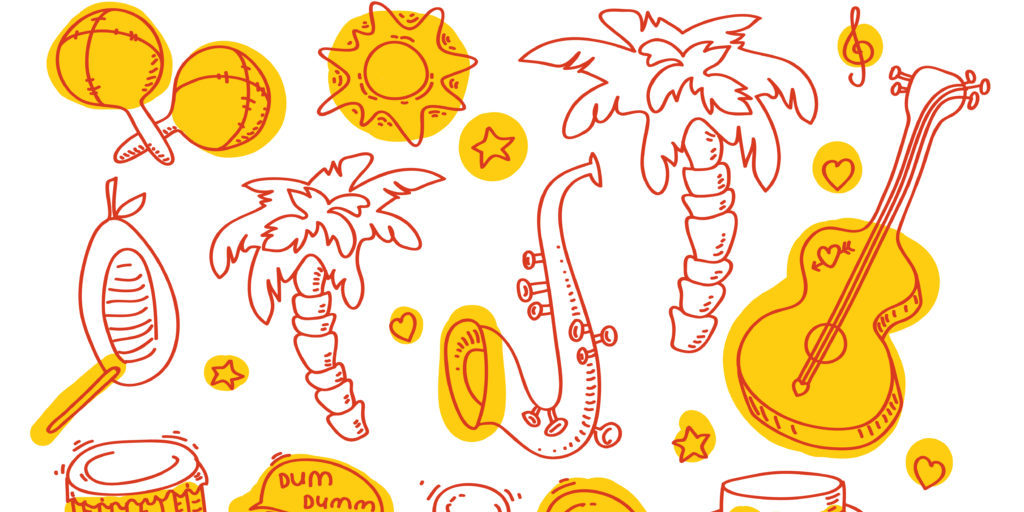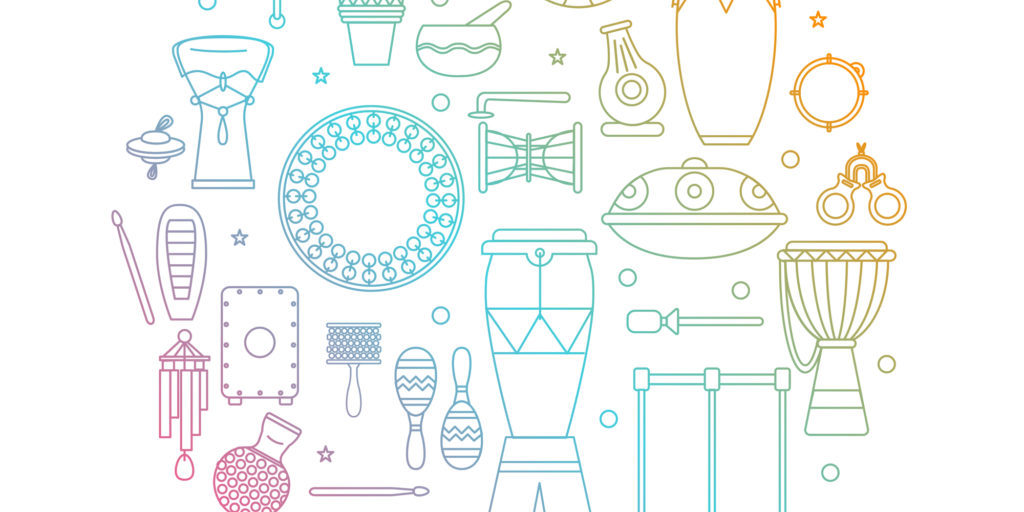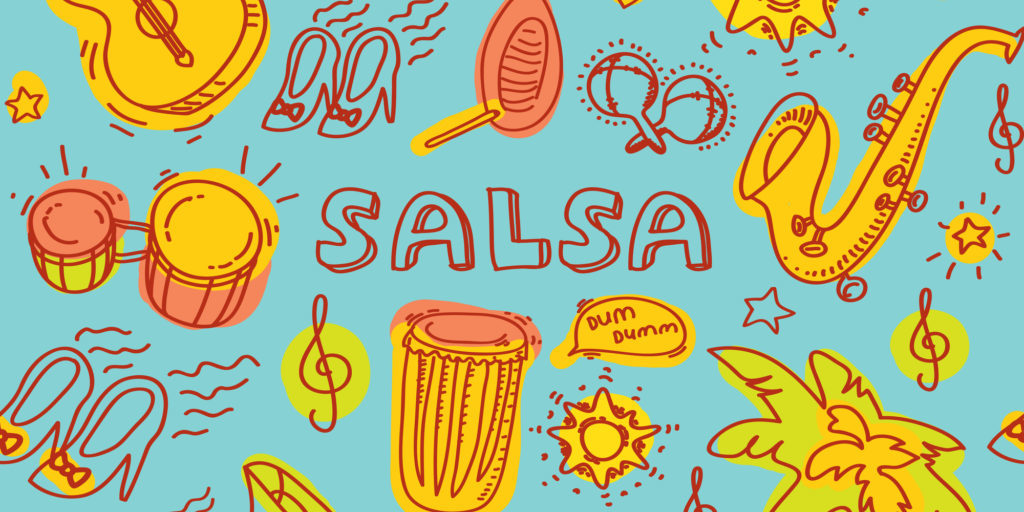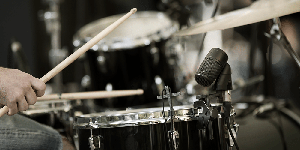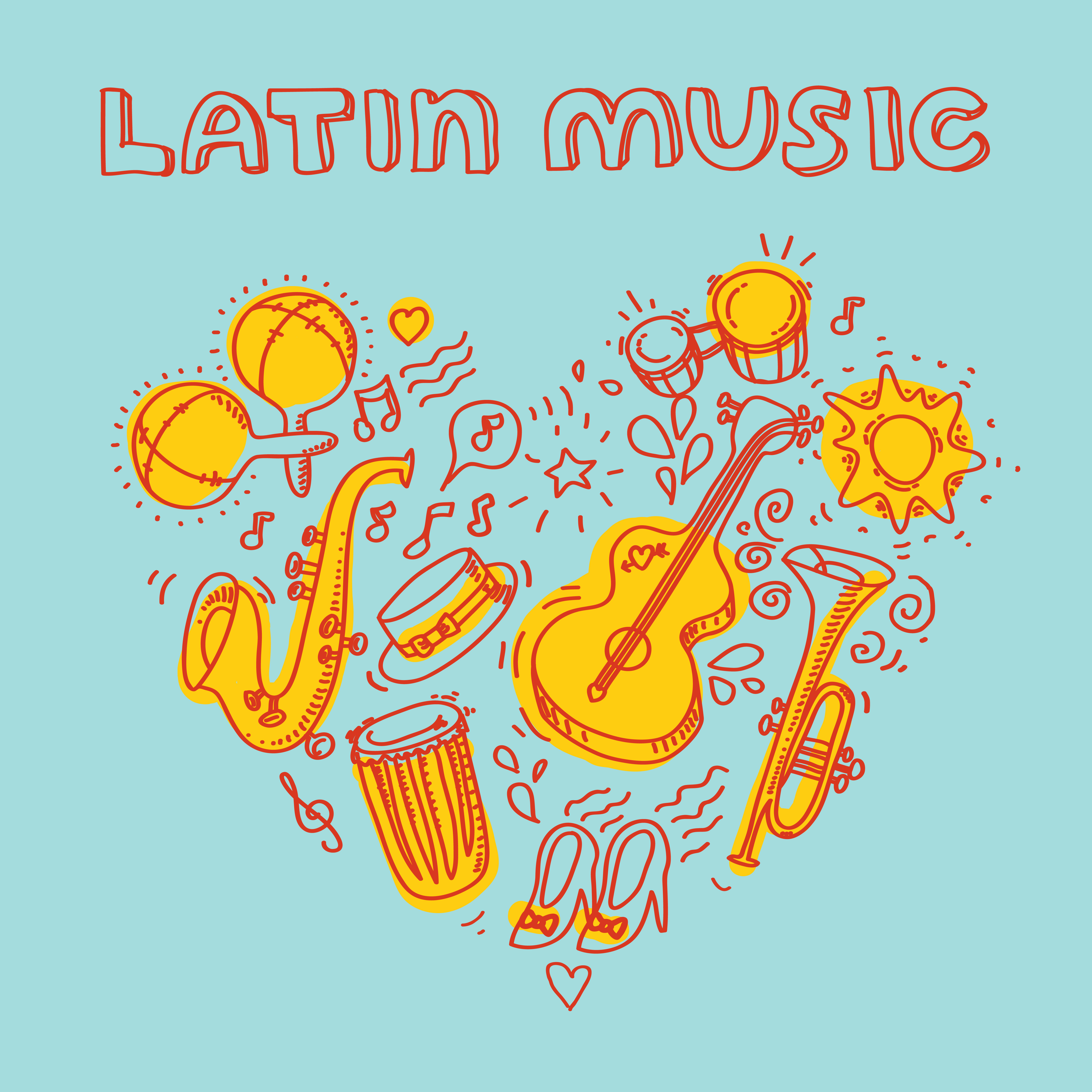
Now that we have a basic understanding of the history of cha-cha-chá music we will take a more practical approach to how it is played. We will assess the percussion instruments present in a cha-cha-chá ensemble before analysing exactly what rhythm each instrument plays. We’ll then consider how we can approximate these sounds on the drum kit before thinking about which grooves will be useful for varying musical situations.
The Charanga Percussion Section
Before we discuss the details of cha-cha-chá music let’s remind ourselves of the instruments present in a typical charanga ensemble:
1. Guiro
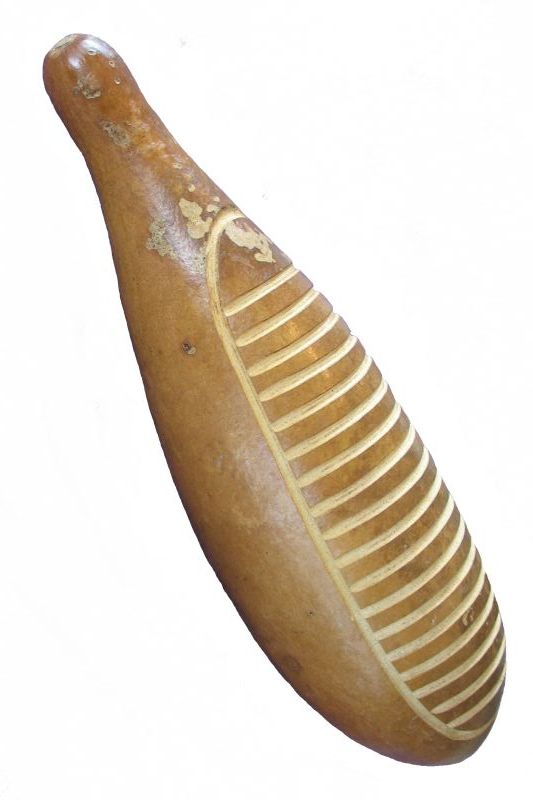
A scraper traditionally made from a hollowed out gourd. In modern times guiro’s have been manufactured from hard plastics by percussion instrument companies such as LP or Meinl.
2. Congas
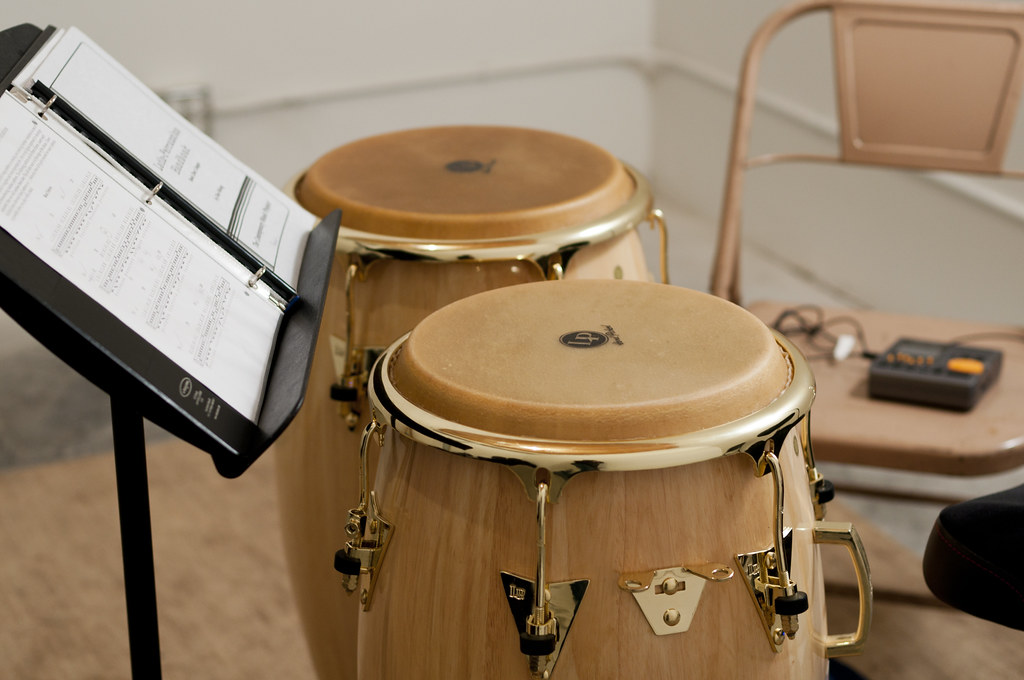
Large single headed hand drums. Congas originated in rumba music, where they are traditionally played 1 drum per musician. In cha-cha-chá music congas are usually played in pairs (2 drums by one percussionist) - the larger drum in called the tumba and the smaller one is called the conga.
3. Timbales
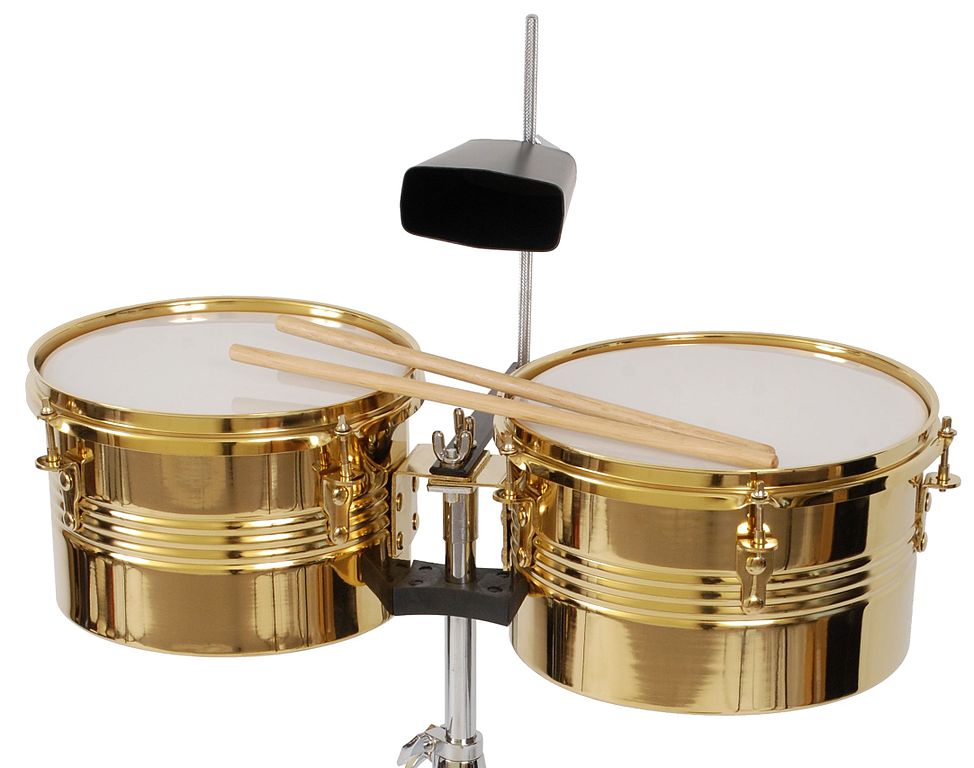
A pair of single headed shallow metal drums played with thin wooden sticks. Timbales produce a high pitched piercing sound which is used sparingly mainly for fills. The timbalero (timbal player) usually plays the high pitched cowbell which gives cha-cha-chá music it’s steady driving sound.
4. Claves
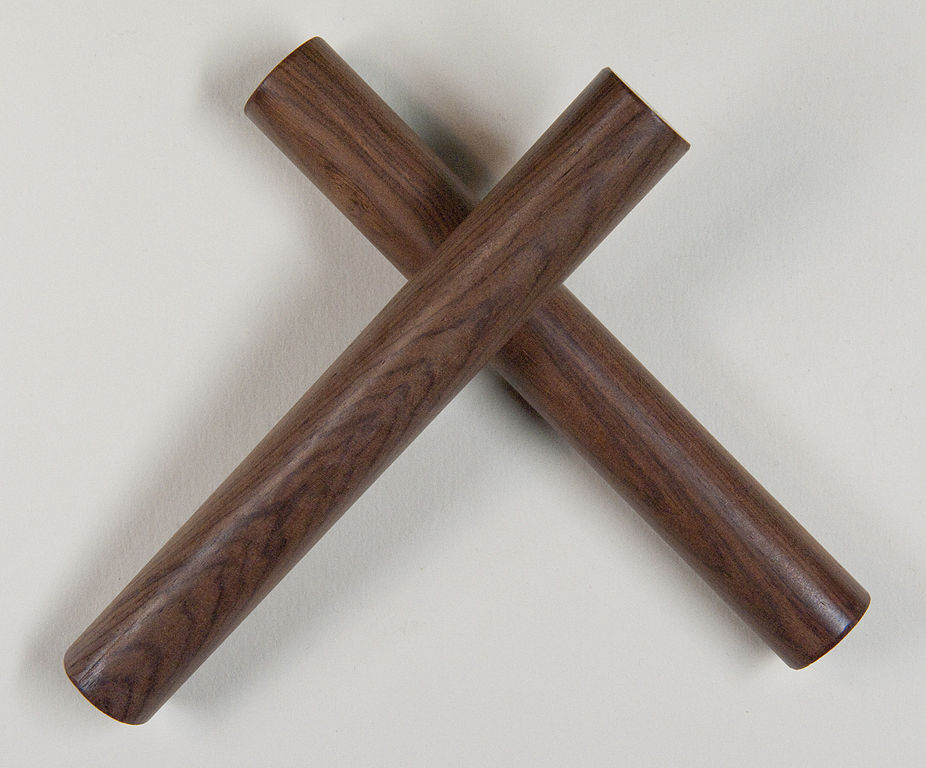
Claves aren’t traditionally heard in cha-cha-cha music, however in certain situations the timbalero or a singer may wish to play a clave. Claves are a pair of thick wooden sticks that produce a piercing high pitched sound.
The Cha-cha-cha Groove
Now let us look at the rhythms played by each percussion instrument. Seeing these rhythms written down will enable us to see exactly how each links to the next, making it easier for us to play all of them at once as a drum kit groove. Remember that, unlike salsa which is in cut time (meaning that while there are 4 beats in each bar, the emphasis is heavily placed on the st and 3rd quarter note beat) cha-cha-cha music is in 4/4. The fact that the emphasis is now on every quarter note beat means that cha-cha-cha music is much slower than salsa music.
- Guiro - the guiro plays a long sustained quarter note scrape followed by 2 short 8th note scrapes.

- Congas - the cha-cha-cha conga marcha is similar to that played in salsa but the slower tempo means there is more space to embellish the groove with syncopated accents. Here is a typical conga pattern played in cha-cha-cha music.
- Timbales - the timbal player plays a steady quarter note pulse on a small high pitched cowbell. These quarter notes can also be embellished with ghost notes on the 8th note upbeats. While maintaining this quarter note pulse it’s common for the timbalero to play the timbal with his/fingers on beats 2 and 4 producing a closed (pressed) tone and an open tone respectively.

Learn with LPM
Cha-cha-cha Anatomy
Cha-cha-cha music usually followed a very similar song structure to that of salsa music. Let’s remind ourselves of this structure by recapping what we learned in the article on salsa music from module 2 of this course.
- Intro - in a salsa song the intro usually features a horn melody. In cha-cha-cha music this melody is more often played by the flute or violins, though it’s purpose (to provide a catchy hook) is the same. Like in salsa music a cha-cha-cha intro will typically end with some band hits (the whole band playing a specific rhythm together) or a stop on beat 1 of the final bar leading into the verse.
- Congas - the conga pattern tends to remain the same throughout a cha-cha-cha song.
- Guiro - the guiro plays the same rhythm throughout a cha-cha-cha song. The only variation will come when the rest of the band are playing hits that the guiro player will also follow.
- Timbales - The timbalero will play the high pitched cowbell which characterises cha-cha-cha music. In the penultimate bar it’s common for the timbal player to fill into the hits or stops and play an abanico (stylistic timbal fill ending with a rimshot accent) leading into the verse. After the band hits at the end of this section, it’s common for the timbales to play an abanico (a stylistic timbales fill) into the verse.

- Verse - the verse, just like in a rock or pop song, is where the singer enters. If horns play, it will usually be to embellish the harmony, add counter melodies, or provide rhythmic interest for the percussion section to interact with.
- Chorus - the chorus (not to be confused with the coro) comes after the verse and usually repeats before going back to the verse. Depending on the length of the song, the verse and chorus can repeat a number of times before moving on to the next section of the song.
- Coro/pregon - the coro forms the main body of a salsa or cha-cha-cha tune and is usually a 4 or 8-bar harmonic vamp. Once the song reaches this point, it usually cycles around this chord progression for the remainder of the song until the end, which is usually a refrain of the intro. The coro features a catchy vocal hook that is sung by a group of backing singers, or the rest of the instrumentalists while the pregon is similar to a “rap,” though not as busy rhythmically, where the lead singer improvises some melodic content and lyrics in between the backing vocal phrases.
- Mambo - the mambo section is usually played over the same harmony as the coro but is characterised by a repetitive horn melody.
- Solos - in certain settings, it’s common for instrumentalists to solo over the chord changes established in the coro/pregon.
- Short coro - as many salsa and cha-cha-cha songs reach their climax and conclusion, the coro will be reduced to half the length, without pregon in between; this section is called a short coro and builds the intensity of the song ready for a big ending.
Ending - the end of a salsa or cha-cha-cha song tends to be a refrain of the intro and it’s common to end with some band hits.
Cha-cha-cha on Drum Kit
Just as with salsa music, when playing cha-cha-cha your main role will be approximating rhythms played by the charanga percussion section. The table below outlines how this can be done.
| Percussion | Drum kit |
| Conga (open tone, high) | Hi-tom |
| Congas (open tone, low) | Mid/low-tom |
| Congas (slap tone) | Snare drum (cross stick) |
| Cowbell | Cymbal bell, or cowbell if available |
| Timbales (cascara) | Low-tom shell, or hi-hats |
| Timbales (open stroke) | Snare drum (snares off) |
| Timbales (rimshot) | Snare drum rimshot (snares off) |
| Clave | Snare drum (cross stick), or block if available |
| Guiro (long scrape) | Hi-hat (clap hats together using foot pedal to produce a long sustained note) |
| Guiro (short scrape) | Hi-hat (close cymbals together using foot pedal) |
This is by no means a definitive guide to reproducing percussion sounds on the drum kit and the above table should serve as a guide. There are many ways to approximate the same sound. For example, another great way to reproduce the guiro is to play long “buzz” strokes and short single notes on the rim of the snare drum.
Final Thoughts
Remember that music is a auditory medium so to truly understand how to play any given style you need to completely immerse yourself in it and listen to the source material. Learning about the history of the style and the origins of the rhythms your playing is also important and doing so will lead you to new musical discoveries which can be incredibly enriching. Learn the percussion parts and learn how to play them. The drum kit is still a relatively new instrument in many latin styles of music and cha-cha-cha is no exception. In many musical settings a bandleader will prefer a traditional sound, which means playing a drum kit simply won’t be an option.
I hope that this article, brief though it is, in combination with the video lessons in this drum module will give you a good introduction into the style and lead you in the right direction should you want to pursue cha-cha-cha music any further.
About the Author: Brendan Bache
Brendan has been in love with the drum kit since the age of 8. His love for music spans many musical genres but his great passion is the study and performance Latin American music. This interest has led Brendan to study many Latin percussion instruments such as congas and bongos as well applying these rhythms to the drum kit. Brendan is the drum kit teacher at Liberty Park Music. Check out his drum kit courses!




